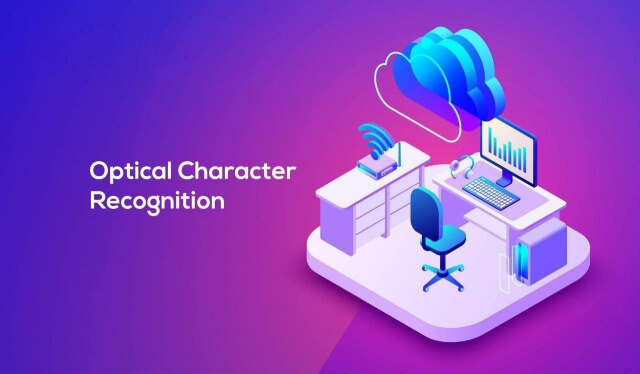Table of Contents
Nowadays, you can see the significant development of Robotic Process Automation in automating processes in various fields. One of the areas where RPA is doing its job well is OCR. RPA robotic process automation programs replicate human interactions with computers to automate work.
RPA bots will rely on OCR to perform invoicing, screening, etc… In the following article, Winactor Support will give you an overview of the application of RPA in OCR.
What is OCR in RPA?
OCR’s full name is Optical Character Recognition. This is a widely used optical character recognition software today. The primary purpose of OCR is to be a tool for capturing handwritten and printed documents as images (unstructured data).
It then converts them into machine-readable characters (structured data). For handwriting recognition, OCR recognizes based on the lightness and darkness that make up the different letters and numbers in a given language.
To recognize handwriting, the OCR tool will need to perform the following 4 steps:
- Step 1: OCR will process the image by converting all scenes to grayscale. At the same time, it will smooth and de-skew the letters.
- Step 2: Detect lines representing words and characters
- Step 3: Create a list of candidates for each employee. Next, compare them with the training data.
- Step 4: Select the most suitable candidate and generate a machine-readable character.

What are the use cases of OCR in RPA?
Currently, in the field of character recognition, RPA has been active in many different fields:
- Financial field
- HR Department
- Healthcare sector
- Some other areas
HR Department
As you know, the human resources department is an important part of the business’s organizational structure. The shortage of personnel in this department will lead to many delays: cost management, record statistics, payroll,… To increase the number of employees for businesses with low investment costs, many companies have opted for RPA bots. These bots will work with OCR to handle a variety of tasks:
- Screening records: In this job, the OCR department will extract data from paper records, letters of recommendation, and other documents. The RPA bots will then automate candidate sourcing and verify their work history.
- Expense management: Character recognition will scan employee expenses: receipts, account statements, etc… At this point, RPA bots will cross-check individual payments compared with company regulations and external spending regulations to ensure compliance.
- Document management: When the human resources department generates a large amount of recruitment information, business data, etc., it makes perfect sense to take advantage of RPA. At this point, the automation robot will extract the data and automate the document management processes of the HR department effectively.
Financial field
The financial sector is where employees will often have to work with numbers. It will lead to pressure for employees as they often have to work in a stressful environment, requiring high accuracy. Therefore, combining RPA with OCR helps financial institutions to automate tasks such as:
Invoice: In this job, optical character recognition software will collect invoice data by extracting relevant information: ID, VAT, Address, purchased product, price, VAT rate,… The primary purpose of this task is to create a master profile and allow Robotic Process Automation bots to match invoices for purchases.
- Credit scoring: To optimize this process, businesses will need a combination of RPA and OCR. In it, OCR will be used to collect data to generate credit reports. These data will come from payment history, tax returns, loans,… Then, the RPA bots will use all that data to process and validate loan accounts, debit, and credit card management.
- Insurance documents: In order for RPA bots to register and handle customer complaints and requests, it is impossible not to mention the support of OCR. At this time, optical character recognition technology will extract insurance-related data: passport, birth certificate, ID, driver’s license, resume,….
Healthcare sector
For hospitals and healthcare organizations to improve the quality of customer service, it makes perfect sense to use a combination of OCR and RPA. These 2 technologies will streamline processes that improve processing speed and work productivity.
- EHR Document: The EHR is also known as an electronic health care record. It is a digital version of the patient’s paper chart. First, OCR will make the transition between paper and electronic documents by recording all the information in the paper chart: patient demographics, progress notes, diagnoses, medications,… Then, the software robot will enter the data into the healthcare record system and process it as required.
- Patient Registration: When a patient visits the hospital for the first time, they will be asked to fill out initial medical registration forms. Then, the medical staff will manually enter this information into the system. Instead, to improve work efficiency, many hospitals have replaced this process by using OCR and RPA. At that time, OCR will capture information from the patient’s input form, and RPA bots will automatically enter the data into the system without medical staff’s intervention.
- Trial Match: OCR software will digitize doctors’ unstructured pathology reports and notes. It then feeds the entire data into NLP algorithms for clinical trial matching. This work aims to find individuals eligible to participate in a given clinical trial. The RPA bots then automatically upload the data to the TMF trial master file used to manage test matching and tracking.
WinActor is known as a highly effective RPA solution for businesses in automating work processes. This technology allows businesses to apply in a variety of different fields. It helps to solve the problem of shortage of human resources effectively when WinActor bots can replace most of the humans at desk jobs.
Moreover, with the ability to synthesize accurate data, Software Robot is also an effective tool to help businesses come up with new strategies to promote strong development. Therefore, now WinActor is present in many countries around the world, it accounts for 50% of the Japanese market.
Conclusion
With RPA combined with OCR, we can see that RPA is one of the best and most modern software robots available today. It participates in most business processes to automate and optimize effective workflow. In addition, when RPA is combined with OCR or any other technology, it is easily compatible. You can use software technologies in parallel to improve work performance.

WinActor is an RPA software solution by NTT DATA Corporation to help businesses master technology, create breakthroughs in the digital age 4.0.




